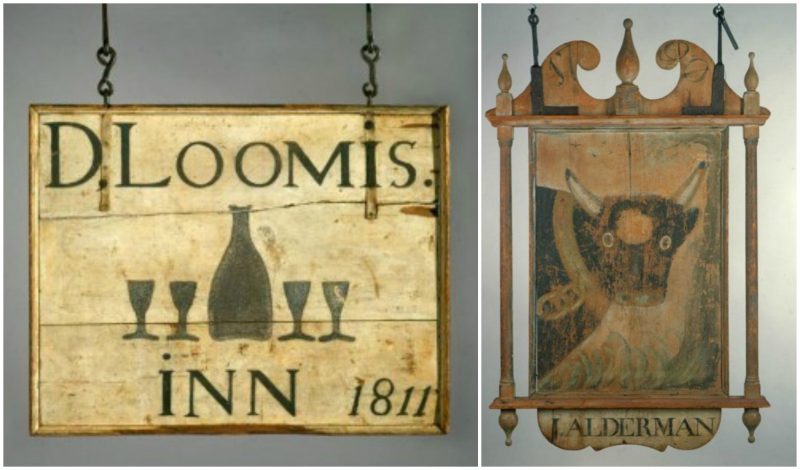Tavern, pub, and coffee shop signs today come in many different shapes and sizes and usually hang on recognizable objects that are more or less standardized for their function. In the colonial days, when taverns and inns looked like simple ordinary houses that were licensed to accommodate strangers, they surely needed a distinctive sign in order to be recognized. That is why the tavern sign appeared as a form of early American folk art.
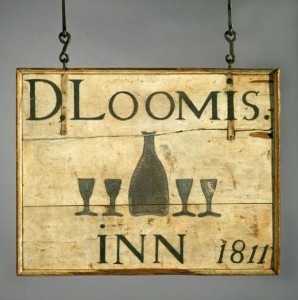
Although there is no particular rule that defines the look of these signs, they usually consisted of a wooden signboard painted on both sides with a combination of images and words and equipped with hand-forged, often decorative, iron hardware for hanging. These early tavern signs were more a practical need than a form of artistic expression. They needed to inform travelers that the building is offering entertainment, food drink, lodging, and stables for the horses.
Not many tavern signs survived from those early days because of the harsh conditions they were exposed to, being displayed outside. However, according to the estimated number of licensed taverns and inns, there were probably around 5,000 tavern signs made in Connecticut between 1750 and 1850. Only about a hundred of these have survived until today and 70 of those are kept at the Connecticut Historical Society (CHS) in Hartford.
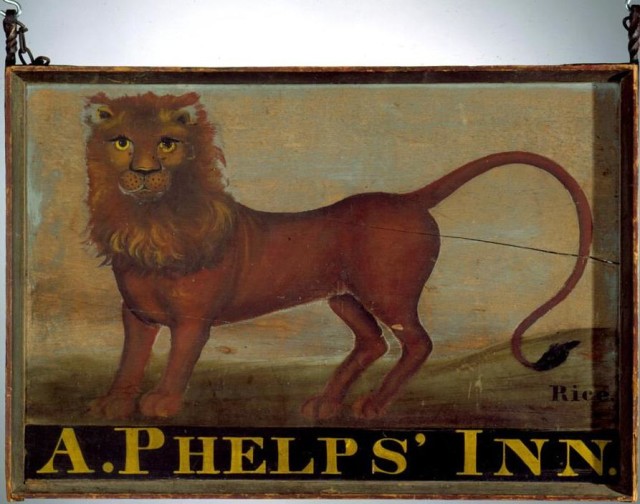
Tavern signs are respected as a form of traditional art, but it is really difficult to study them historically because of their condition and lack of precise date information. Many of the signs have more than one layer of paint on them. They have been repainted and changed any time the weather did damage on them or the venue changed its owner.
Luckily the tavern sign collection at the CHS is well preserved and well documented. This collection exists thanks to Hartford insurance company president Morgan B. Brainard. He is a descendant of one of Hartford’s founding families. Brainard started collecting signs in the 1920s. The signs in his collection are exclusively from the Connecticut area. Being an antiquarian, he made sure that all of his signs are well documented. Most of the signs have a history and can be linked to the towns or even the individual owners. He also gathered information from tavern licenses, newspaper advertisements, and other documents in order to determine the exact years when the signs were used. That is why his collection is considered as important for the history of tavern signs throughout the United States.
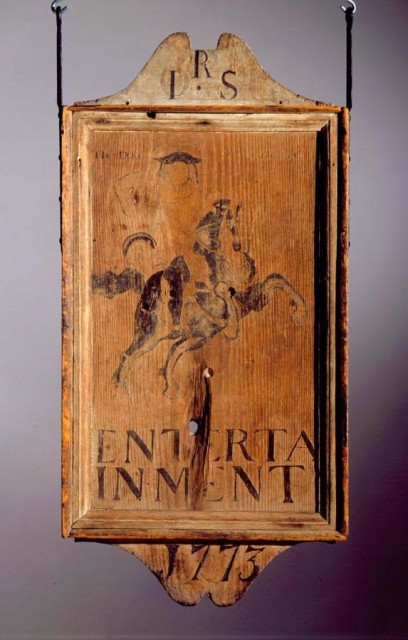
Research shows us that there are three major types of 18th-century taverns signs. The most iconic one is probably the post-and-rails type. It consists of two vertical, turned posts and two horizontal, molded rails that together frame a vertically-oriented signboard with straight sides and a decoratively-shaped top and bottom. Another type of signs is similar to the previous but it replaced the post-and-rails framing with four strips of molding nailed directly onto the signboard (like the Duke of Cumberland sign shown here). The most simple and probably the most common type consists of a plain panel, rectangular or square in shape. It was either unframed or framed by applied moldings. There are not many original signs of this last type that survived until today.
Speaking of style, the 18th-century tavern signs (also those that were made later), followed the style of architecture and furniture that was popular back in those days.
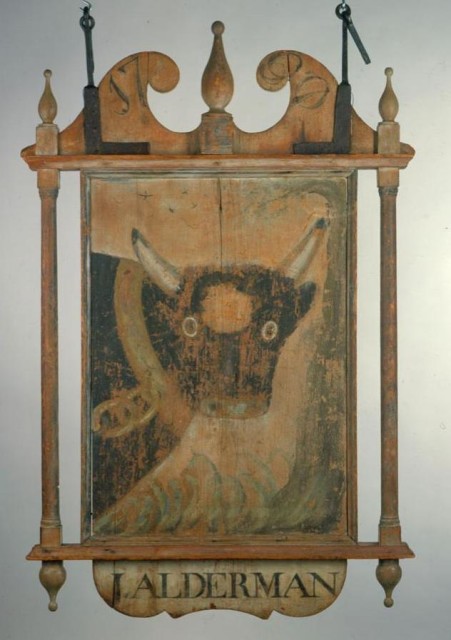
The most important thing for a sign is to be visible. The tavern signboards were painted on both sides and hung from a crossbar atop a high post or from a horizontal wooden bracket extending outward from the side of a house.
The imagery of the taverns signs is also an interesting subject. They usually had a single large image above a brief legend, typically the innholder’s initials, a date (when the license was first granted), and sometimes the word “entertainment.” The words “inn” or “tavern” almost never appeared on signs from the 1700s.
Here are some the most common images that you could find on an early tavern sign: horses, soldiers, suns, birds, coats of arms, ships, bulls, and saddles (and many other). Later, when the Republic was formed, eagles started to appear on many tavern signs. Flags, horse-drawn vehicles, moons, suns, lions, grapevines, punch bowls, and decanters also became popular. Some of the more complex signs that appeared later had painted portraits or landscapes. The images on the signs gradually changed from simple shapes to complex drawings. These changes are due to the change of the way people traveled and the way inns started to look and function in later years. Also, one of the reasons is the appearance of more artists in the region. Signs were done by professional painters instead of amateurs.
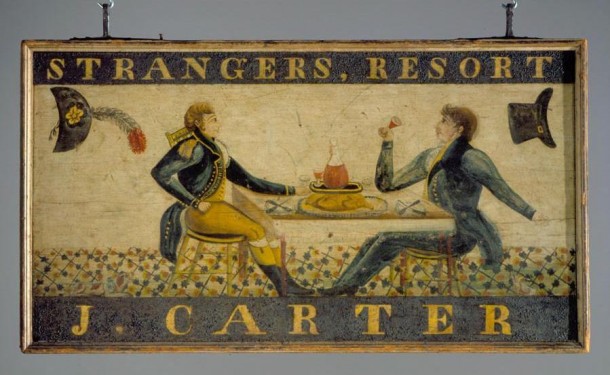
Today, the legacy of early tavern signs is more than obvious. The iconic shape of post-and-rail signs can still be seen in front of many venues. From the colonial times, until modern days, the imagery of the tavern sign and its significance is deeply embedded in the American imagination.
